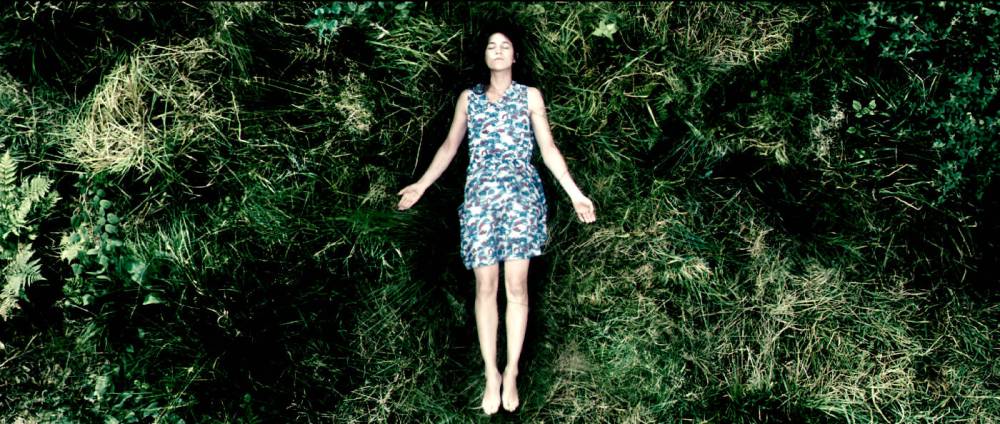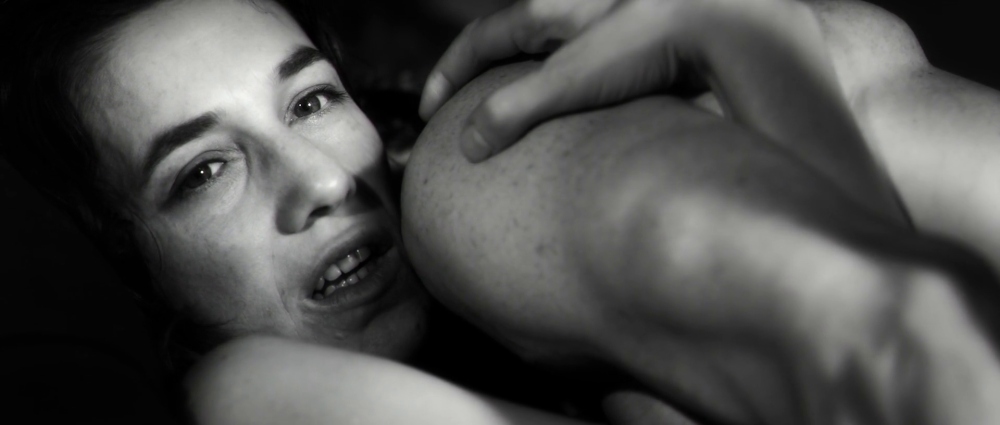European Extreme – Art or Exploitation?
Lars Von Trier’s Anti-Christ presents itself as a typical European Extreme art film. However, it could be argued that he is using the morally ambiguous and potentially misogynistic nature of the text as a way of manipulating his audience and marketing the film.

European Extreme cinema is best defined by it’s explicit imagery, which is both often overtly violent and sexual, it “blurs the boundaries between art, entertainment, documentary and pornography” (Brown, 2013, p.3). We can see all of this present in Von Trier’s film, his decision to shoot handheld, using in-camera zooms gives a documentary aesthetic and his graphic presentation of un-simulated sex and violence make this a typical European Extreme film; but can we call these films art? It can be argued that for a film to have merit as a ‘piece of art’ it needs to say something beyond it’s explicit imagery, in other words there should be a reason for its’ explicit nature. In Anti-Christ Von Trier makes this ‘reason’ hard to decipher, as he presents morally ambiguous standpoints, specifically on women, and refuses to explain them. In an interview, he was asked if the film is misogynist, to which he replied “Misogyny? I don’t know. Sometimes I wonder would happen if I just said “I hate women”?’” (Jenkins, 2009, page 1). This statement is intentional, in being this vague von Trier is provoking his audience, causing them to question the film and in turn creating discourse that will encourage others to watch.

This misogynistic attitude is shown throughout but can even be seen in a smaller way in the film’s poster (shown above), which has the ‘T’ in Anti-Christ replaced with the sex symbol for women. This seems like a visual way of suggesting that the woman is the Anti-Christ or the devil; this may seem like a stretch but it is unlikely that this was unintentional and is more than likely a ploy to market the film, which in itself feels exploitative. As well as the film’s marketing, Anti-Christ’s potentially misogynistic nature also comes from it’s grounding in pagan and witchcraft mythology, it is hard to understand if Von Trier is agreeing with the misogynistic views of these practices or if he is denying them, this is where controversy is created. He is presenting “equally provocative and overlapping view points, thrusting the burden of interpretation onto the audience” (Badley, 2013, p. 14), this idea of audience interpretation is what makes art cinema but when dealing with such explicit material it feels wrong for the director to not take some sort of moral standpoint. We can see this paradoxical nature embodied in the clip linked here, which is a different version of the flashback scene shown in the prologue, played now at the end of the film.
https://learningonscreen.ac.uk/ondemand/index.php/clip/149295

This scene tells us that She knew her son would die and let it happen, in turn “reclaiming the pagan monstrosity of her female sexuality and power” (Badley, 2013, p.9), which is clearly a problematic presentation of women. The fact that She is blamed entirely for the death of her son, and it is her sexuality that ultimately leads to his death, shows that the ‘villain’ of von Trier’s film is a woman. However, in using slow motion and black and white cinematography here, Von Trier creates contrast with the rest of his film and leads the audience to wonder if this scene is truth or fiction, “the flashback is explicitly misleading” (Thomsen, 2009, p. 5). In adding this visually and thematically misleading scene, von Trier is presenting controversial views then neither confirming nor denying them; which he knows will undoubtedly lead more people to discuss the film’s content.
To conclude, it seems that with Anti-Christ von Trier is at his most vague in terms of morality. This sense of vague morality is perpetuated in his lack of explanation of the films questionable influences, the contrasting visual style and his conflicting portrayal of women. Yes the film contains many aspects typical of European Extreme cinema, I would argue that here it is more a case of exploitation for the sake of controversy.
Blog Summary: https://up811388.home.blog/ – New German Cinema
UP811388 is an excellent blog as it is clear throughout, especially in it’s introduction, which explains the historical contexts and plot of the film in a concise yet clear way; which leaves room for a deeper exploration of the film itself. This blog is effective as it looks at Wenders film from two viewpoints, using each to provide further analysis of the text. The fact that they are looking at the film from two standpoints shows extensive knowledge of the film, beyond initial reaction. By exploring the film as both about Germany and as an American production, we learn more about Wenders intentions to have the film act as an allegory for German guilt and redemption. This point is made stronger in the chosen clip, which perfectly illustrates the overall aim of this blog. There is clearly thought out and extensive amounts of research here, into both German film and American road movies. Each quote is embedded well as to not disrupt the flow, and the research into Wenders’ earlier life is especially strong in providing even further context for Wenders’ choices. As well as this, there seem to be no mistakes regarding grammar or punctuation and the general format of blog is clear and engaging.
Bibliography:
Badley, L. (2013). Antichrist, misogyny and witch burning: The Nordic cultural contexts. Journal of Scandinavian Cinema, 3(1), 15–33. https://doi.org/10.1386/jsca.3.1.15_1
Brown, W. (2013). Violence in Extreme Cinema and the Ethics of Spectatorship. Projections: The Journal for Movies and Mind, 7(1), 25–42. Retrieved from http://search.ebscohost.com/login.aspx?direct=true&db=mzh&AN=2013443178&site=eds-live
Jenkins, David. (2009, July). Lars Von Trier discusses ‘Antichrist’. Controversy? What controversy? Lars Von Trier is meek and mild when it comes to discussing his latest film, ‘Antichrist’. TimeOut London. Retrived from https://www.timeout.com/london/film/lars-von-trier-discusses-antichrist-1
Thomsen, B. M. S. (2009). Antichrist-Chaos Reigns: the event of violence and the haptic image in Lars von Trier’s film. Journal of Aesthetics & Culture, 1, 1–N.PAG. https://doi.org/10.3402/jac.v1i0.3668
Von Trier, L. (Director). (2009). Anti-Christ [Video file]. Retrieved from https://learningonscreen.ac.uk/ondemand
(Bibliography and quotes = 176)